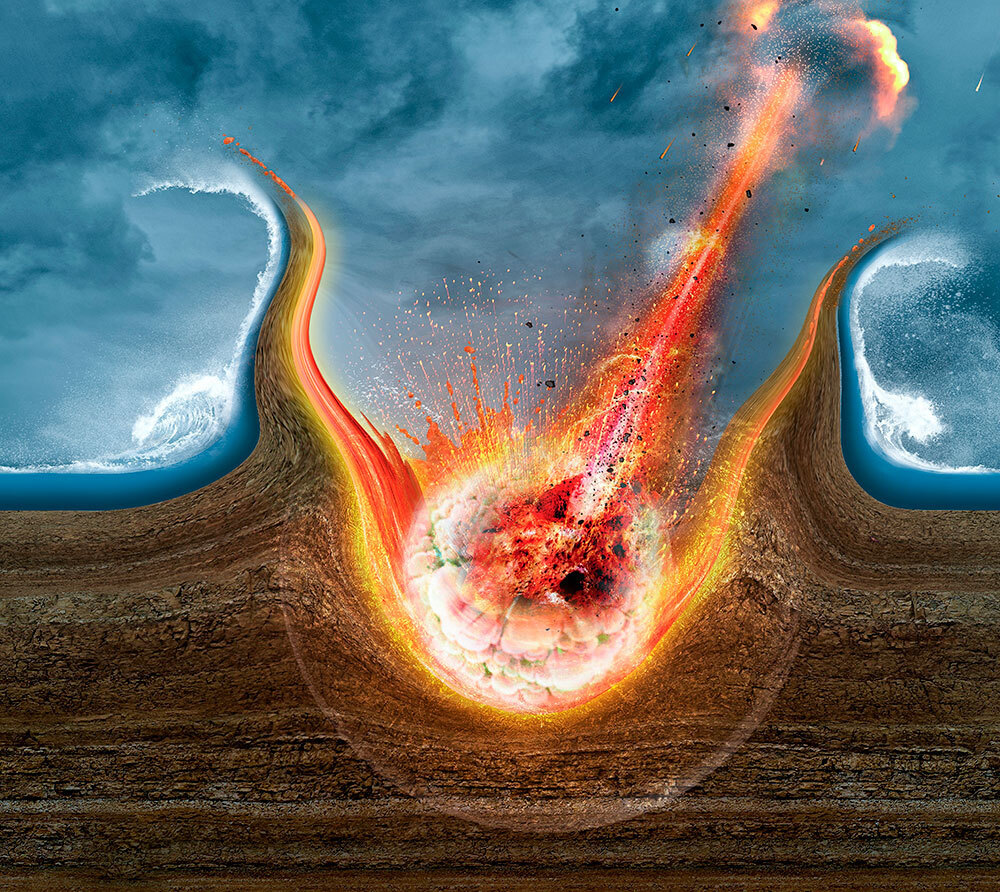
|
|
ILLUSTRATION BY CLAUS LUNAU/SCIENCE SOURCE
|
|
Students learn that a six-mile-wide piece of space rock crashed into Mexico’s Yucatán coast 66 million years ago, leading to the extinction of 75 percent of the world’s species, including all non-avian dinosaurs.
But what if that space rock was not alone?
Using seismic data, researchers have discovered a possible crater, 5.3 miles wide, now buried under the sandy seafloor off the west coast of Africa. A new study says it could have been created about the same time as the dinosaur extinction. It was made by a space rock at least a quarter-mile wide, slamming into Earth at 45,000 mph, unleashing the energy equivalent to 5,000 megatons of TNT. (Above, a rendering of an asteroid impact on Earth.)
Read the full story here.
Please consider getting our full digital report and magazine by subscribing here. Thanks!
|
|
|
|